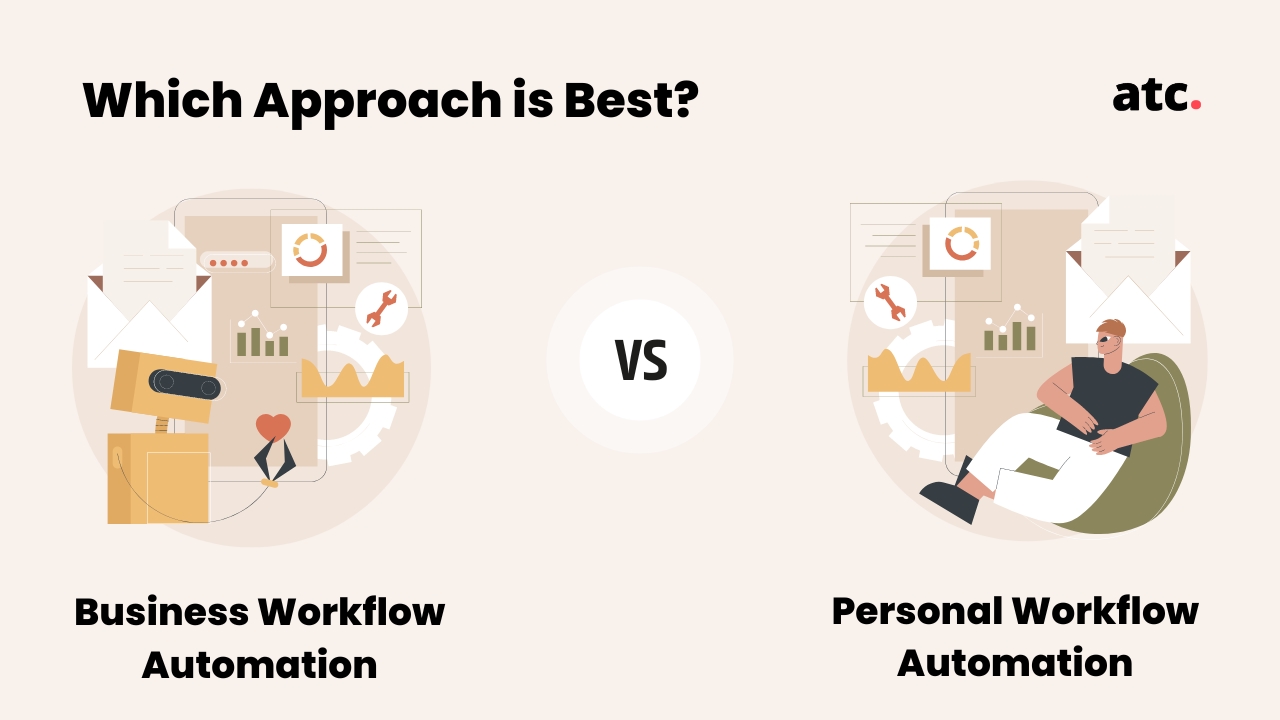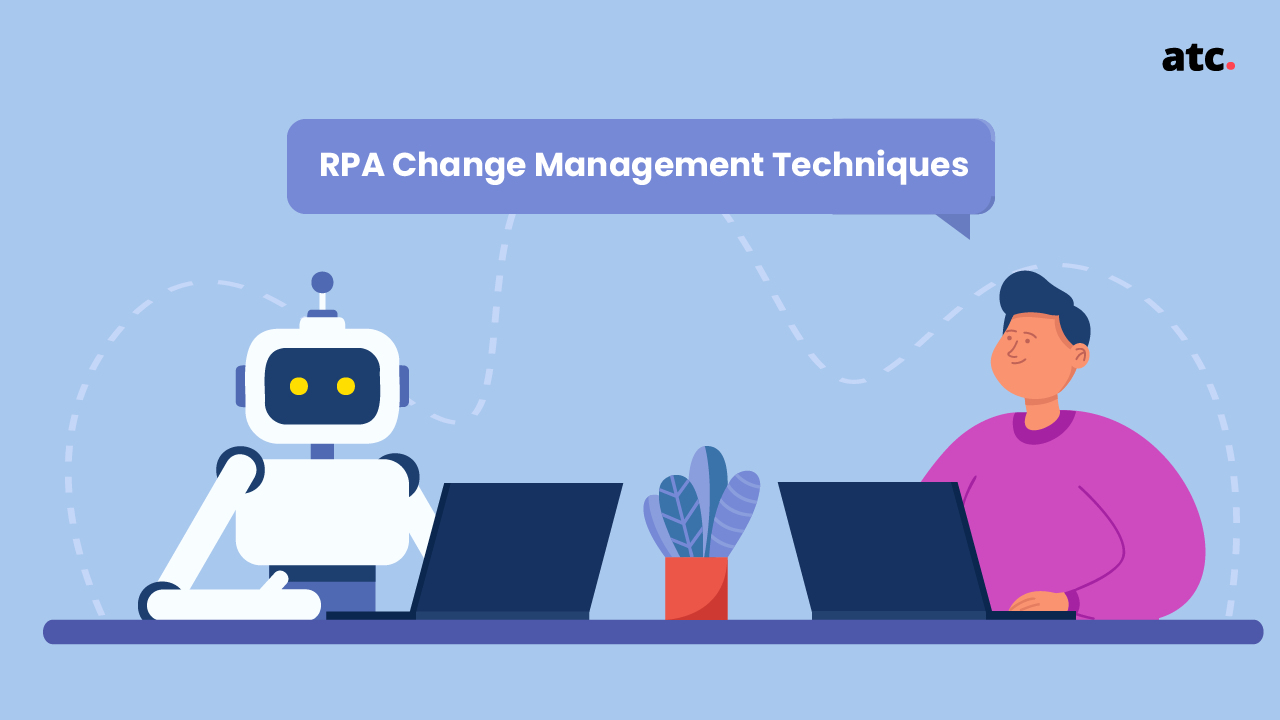Subscribe to the blog
At a time when companies are facing increasing pressure to be more digital, having a robust automation strategy is essential for success. Automation strategies allow businesses to streamline their processes, reduce costs and increase efficiency across all departments.
Too often, businesses assume that automation is a "set it and forget it" proposition. They choose a few tasks to automate, set up the process, and then move on to other priorities. However, this approach can quickly lead to problems. Automation is a complex process that needs to be constantly monitored and tweaked in order to be effective. Without an automation strategy, businesses are likely to waste time and money on automating tasks that don't need to be automated, or they may fail to take advantage of new opportunities for automation. A good automation strategy will help businesses to focus their efforts on the tasks that will have the biggest impact, and it will also allow businesses to adapt quickly as new opportunities for automation arise. In short, an automation strategy is critical for any business that wants to get the most out of automation.
Embarking upon your automation journey
When it comes to adopting an automation strategy for your organization, there are a few key considerations that you will need to keep in mind. These include determining what processes and areas of your business can be automated, understanding the benefits of automation, and developing a plan for implementing this strategy within your organization.
One of the first steps in establishing an automation strategy is identifying which processes and areas of your business would benefit most from automation. This may include tasks that are repetitive or manual, require significant manpower or resources to complete, or are critical to the success of your business. To determine which processes and tasks would be best suited for automating, it may be useful to conduct a thorough analysis of your operations using tools like process mapping or data analytics.
The next step is to consider the benefits that automation can provide. Automation can improve efficiency, accuracy, and compliance within your organization while also reducing costs. In some cases, it may even help to improve customer satisfaction or enable new services or products. When evaluating the benefits of automation, it is important to consider how it will impact your specific business goals and objectives.
Finally, once you have identified the processes and areas of your business that would benefit most from automation and considered the potential benefits, you will need to develop a plan for implementing this strategy.
Here are a few key factors to consider when determining if your business is ready for automation:
Clear goals and objectives: Automation should be implemented with specific goals in mind. These could include reducing costs, increasing efficiency or improving customer service. Without clear objectives, it will be difficult to measure the success of your automation strategy.
Budget: A key consideration when developing an automation strategy is budget – both financial and time-related. Automation can be expensive both upfront and over the long term, so it’s important to carefully consider your needs and available resources before moving forward with any project. Additionally, as projects progress, there may be unexpected costs or delays that arise that need to be taken into account when planning your budgeting process.
Right technologies and toolsets: Another key factor to consider when developing an automation strategy is the technologies and toolsets that are available to you. There are many different software platforms and products on the market, so it’s important to do your research to find the ones that best fit your needs. Additionally, some technologies may be more complex or difficult to use than others, so it’s important to consider your team’s skill level when making your selection.
Implementation timeline: Once you’ve selected the appropriate technology and budget for your project, it’s important to develop a timeline for implementation. This will ensure that all stakeholders are aware of the project’s status and can plan accordingly. Additionally, this will allow you to plan in advance for potential roadblocks that may emerge along the way.
Risk Evaluation: There are always risks involved when making changes to business processes, so it's important to carefully consider all of the potential implications before moving forward. Make sure you have a solid plan in place to mitigate any risks and ensure a smooth transition to the new system.
Employee buy-in: Automation can be a big change for employees, so it's important to get their buy-in from the start. Explain the benefits of automation and how it will impact their jobs. Make sure employees are comfortable with the new technology and understand how to use it effectively.
A flexible approach: Automation is not a "one size fits all" solution. What works for one business might not work for another. Be prepared to experiment and adjust your strategy as needed to find what works best for your business.
Points to consider in an automation solution
Ease of Use: When considering an automation solution, it is important to think about how easy it will be to use. You don't want to end up with a solution that is so complicated that you can't figure out how to use it. Consider what kinds of tasks you will be using the automation solution for. If you only need to automate simple tasks, then you might not need a very sophisticated solution. However, if you need to automate complex processes, then you will need a solution that is powerful enough to handle those processes.
Think about how much experience you have with automation solutions. If you are a beginner, then you might want to choose a solution that is relatively easy to use. On the other hand, if you are more experienced, then you might be able to handle a more complex solution.
Functionality: A useful automation solution should be able to consider the functionality of a device or system before it is automated. This might include tasks such as determining what kinds of inputs and outputs the device has, checking for updates to its operating system, or running tests on the hardware to ensure that it meets performance requirements. By considering these factors upfront, an automation solution can ensure that it's possible to complete tasks with the device in question.
Scalability: When considering an automation solution, it's important to keep scalability in mind. An automation solution that is scalable will be able to handle increased workloads as your business grows. This is important because you don't want to have to reinvest in a new automation solution every time your business expands. Look for an automation solution that can be easily scaled up or down to meet your changing needs.
Compatibility: It is also important to think about compatibility. Will the solution work with the devices and software you're using? Is it compatible with your business processes? And is it compatible with your budget?
Consider these factors when choosing an automation solution:
Device compatibility: Make sure the automation solution is compatible with the devices you're using. Otherwise, you'll need to purchase new devices or find a workaround.
Software compatibility: Ensure that the automation solution is compatible with the software you're using. Otherwise, you'll need to purchase new software or find a workaround.
Business process compatibility: The automation solution should be able to seamlessly integrate with your existing business processes. Otherwise, you'll need to redesign your processes to accommodate the automation solution.
Budget compatibility: Make sure the automation solution is affordable and doesn't require a major investment. Otherwise, it may not be worth the cost.
Conclusion
As your company grows and matures, it will become increasingly important to have an automation strategy in place. By automating the more tedious and time-consuming tasks, you’ll free up your team to focus on more strategic initiatives that will help propel your business forward. Ready to get started? Contact us today for a free consultation – we can help you develop an automation plan that meets your specific needs and helps you reach your goals.




